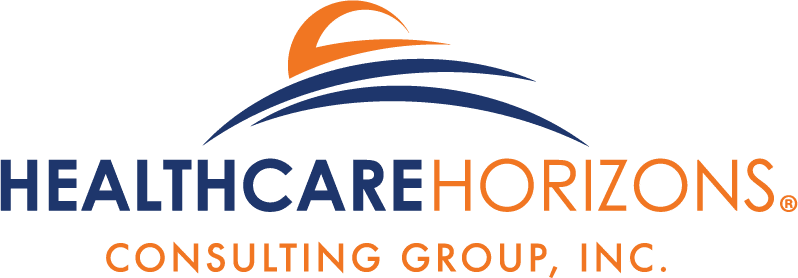It’s that time of year. Time for the annual reflections on the past year and predictions for the next. While you might think there isn’t much change when it comes to employee benefits and healthcare trends, the past two years have proven to be full of surprises. So, we’ll look at the highlights from 2021 and then explore what we see as the 2022 healthcare benefit outlook.
The Impact of the Pandemic
2021 highlighted the negative impact of the Covid-19 pandemic in the workplace. Employers had to analyze nearly every aspect of their work culture, and that included employee wellness. Out of these reviews, clear trends emerged. Women experience more burnout than their male counterparts. Mental health issues were up across the board as people struggled with work and home worries. Remote work exploded, adding new issues for human resources, cybersecurity teams, and the home-work balance. However, as the saying goes, necessity is the mother of invention. (1)
The Healthcare Benefit Outlook
According to new research by LinkedIn, the top three things Americans value most in their career now are work-life balance (34%), compensation (32%) and benefits (26%).
When you hear ‘employee benefits,’ the first two things that jump to mind are probably paid leave and healthcare coverage. With the Covid-19 pandemic stretching into year two, these are still the top “wants” from employees. However, we’re also seeing companies offer a larger variety of perks and solutions to attract and retain strong teams.
Some of these non-traditional benefits include hybrid work options, mental health benefits, more personal time off (with less stipulation for how the time can be used), and financial planning assistance. Yet, the biggest changes are likely to be seen in how healthcare is provided and funded.
Healthcare Benefit Coverage
At its core, the pandemic was a health care crisis. The panic and uncertainty that evolved from sickness, fear, or loss of income emphasize the importance of investing in comprehensive healthcare benefits for employees. Insurance brokers and human resource benefit managers need to keep this insecurity in mind as future benefits are structured.
Flexibility is Key
Gone are the days of one-size-fits-all plans. More personalized healthcare coverage is expected to grow over the next year. Employees realize they may need, or want, different levels of care than their co-workers. This is not surprising when almost every area of our lives, from how we stream television to our GPS, is customized. The areas listed should be explored to provide the best comprehensive coverage for individuals and families. (2)
- Personalized coverage. Each insured member should be able to choose the best care and price-point for their needs. This is actually a win-win for employees and employers. For example, when set up from the onset, people who first use lower-cost interventions see lower prices, if or when their care escalates. This rewards high-value care decisions that can make employee populations healthier in the long run.
- Personalized cost-sharing. Most employers provide an equal level of coverage for all employees. But that approach isn’t personalized. In fact, it can contribute to coverage inequity and perpetuate health care disparities. For example, consider two employees who have a $3,000 deductible on their employer-sponsored health plan, receive the same subsidy from their employer, and are eligible for the same level of coverage. To many, this sounds fair, but if one of them earns $30,000 a year and the other earns $300,000, their ability to access coverage is very different—and that is inequitable.
- Personalized experience. We can’t forget about opportunities to personalize care navigation and support experiences. People want to feel seen and heard. It’s important that employees have access to a broad network of high-quality, low-cost providers who speak their language, understand their culture, sexual orientation, gender identity, etc.—and they need help finding these providers.
Healthcare Benefit Outlook Incentivizes Utilization
Data shows 15% of Americans with employer-sponsored health insurance deferred some care between March and September 2020.
This statistic foreshadows both short and long-term implications for not prioritizing preventative care, which catches small health concerns before they become costly more serious issues.
“For years, we’ve used deductibles and copays to manage utilization and minimize cost increases in the hope that individuals would become better educated and make better health care decisions with some financial skin in the game. However, even before the pandemic, it was becoming clear that this didn’t work, but rather caused employees to defer and even skip preventative care altogether. And now, as preventative care utilization tanked during the pandemic, employers will increasingly see the costly, long-term effects of offering plans that don’t incentivize receiving care early and often.” (3)
Employees need to know their options and be able to access the care they need, when and where they need it. This will improve health, reduce high-cost claims, provide a return on the investment of the resources and costs, and deliver a health program with value for all employees.
What Does This Mean for HR & Insurance Brokers?
The status quo is changing. It’s not what it was 3 years ago and it likely won’t be the same at the end of 2022. First, it’s up to you to provide employee healthcare benefit options to clients that meet the needs of both employee and employer. You can achieve these goals during enrollment season:
- Find plans that remove barriers to employees accessing care
- Ensure the plans offered have uncomplicated user experiences so that confusion does not become a deterrent to use
Second, since we all know that prices aren’t likely to come back down – especially in healthcare – identifying cost savings for benefits is imperative.
Finding cost savings to provide exceptional benefits
We want to help you provide the best overall employee benefits in 2022 and beyond. Addressing overpayments in one of your largest budget line items is a great first step. But you first must know what your data says. Then you can look for ways to reduce overpaying on healthcare claims. Dollars can then be reallocated toward other company initiatives or help keep healthcare costs from rising.
Our “every claim” audits find the errors in data sets – and they are there! Some may be one-time mistakes, but others may be systemic issues causing repeated overpayment and loss of dollars. We are experienced in identifying both.
It is also important that your medical claims are being processed according to your plan design and intent. In our audits, we review your claims according to the unique benefits detailed in your medical plans to ensure those benefits are being administered correctly. If not, these types of processing errors could continue to reoccur and add up to significant overpayments.
2022 will be full of challenges with new legislation for transparency and rising costs. However, we saw perseverance and out-of-the-box thinking this past year that gives us hope in regard to the healthcare benefit outlook. We would welcome the opportunity to partner with you in providing a cost-efficient experience for your company or clients.


